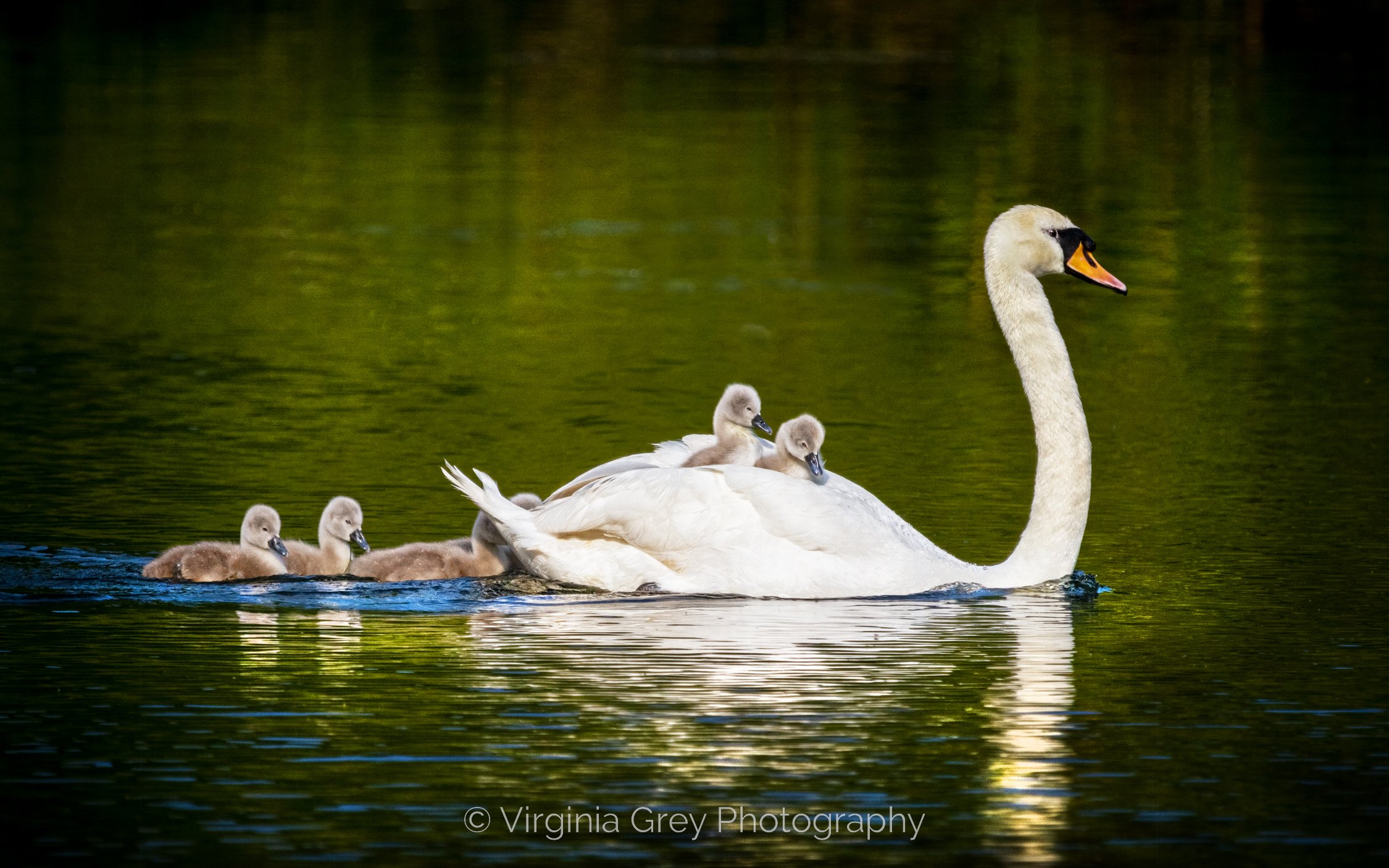Mute Swans
Our native swan, the Mute swan, is protected by Royal Command. These gracious birds have lived our parks for many, many years and are so well established that I could not imagine my daily walk without seeing their beautiful presence.
Swans are the largest water birds in Britain. They are covered in snow white feathers with long, graceful "S" shaped necks, orange beaks and grey webbed feet. The male is commonly known as the Cob, the female is called a Pen. These birds pair for life after an initial ballet like courtship. They will choose a suitable nesting site together on the ground using any materials within about 40 feet to construct the nest. A typical clutch can be 5-7 eggs with one laid every other day. Only when the last egg is laid will incubation begin. The pen will come off the nest for short periods to stretch her legs, have a wash and feed. Whilst this happens the cob will take her place. This usually occurs in April to May and the eggs will hatch after approximately 35 days.
The cygnets that hatch out normally take to the water a day after the last egg is hatched. The parents do not feed them but the pen will "foot paddle" to bring food to the surface for the cygnets to eat. She also pulls out reeds which the young would not be able to reach. One parent will always be on guard duty protecting the young from the threat of predators including foxes, herring gulls, herons, dogs and even man. They will usually travel across the water in a line with the cygnets between the two adults. The pen can often be seeing carrying the young on her back, especially in times of danger or if the cygnets grow tired and they are far from the nest.
These young birds will learn to fly when their flight feathers have grown, from about 16 weeks onwards. By this time autumn is approaching with strong winds and storms, so learning to fly can be a tricky business.
As the cygnets develop into adults they gradually lose their grey colour slowly becoming the snow white of their parents. At this point, if food is scarce, the cob may chase the offspring away, otherwise they may all stay together until the parents breed again next season. Only after several years will the new adults begin the "mating game" and be able to create families of their own.
Swans can live for many years, some may even reach 25 years in favourable conditions.










































